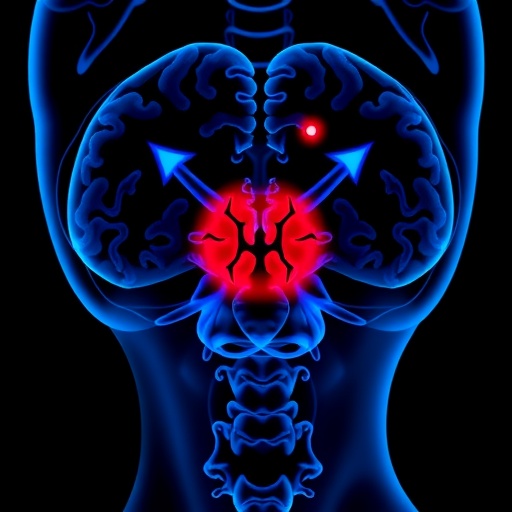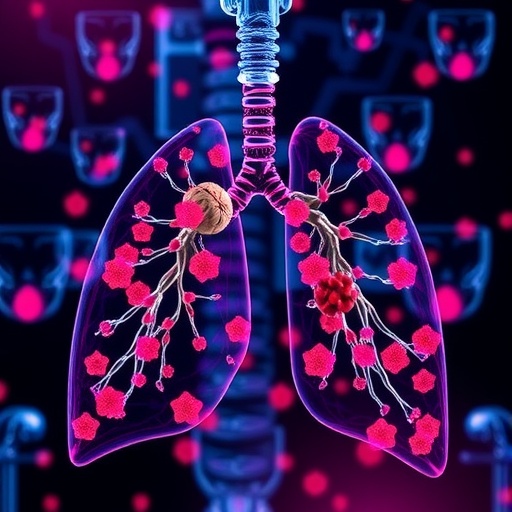Researchers at Waseda University have made significant advancements in the field of cancer treatment through their innovative use of gold nanoparticles (AuNPs). These nanoparticles, which are minuscule particles of gold ranging from 1 to 100 nanometers, exhibit unique chemical and biological characteristics that make them ideal candidates for targeted drug delivery. Their ability to accumulate in tumor sites positions them as promising agents for novel cancer therapies. However, a critical challenge has been tracking the movement of these nanoparticles within the body. Traditional imaging techniques involve external tracers—substances that often detach from the AuNPs during circulation, leading to limited and inaccurate visualization.
In response to these challenges, researchers from Waseda University have introduced a groundbreaking imaging technique that employs neutron activation to create a detectable radioisotope of gold. This advancement allows for long-term tracking of AuNPs within the body without the complications posed by external tracers. The study, spearheaded by Nanase Koshikawa, a PhD student at the Graduate School of Advanced Science and Engineering at Waseda University, along with her advisor Jun Kataoka and collaborators from Osaka University and Kyoto University, highlights a significant step forward in cancer treatment. The findings of this vital research are slated for publication in the highly regarded journal “Applied Physics Letters.”
The mechanism behind the new imaging technique revolves around the activation of stable gold nanoparticles through neutron irradiation. The stable isotope, gold-197 (Au-197), is transformed into its radioactive counterpart, gold-198 (Au-198), which emits gamma rays detectable from outside the body. This groundbreaking transformation preserves the chemical properties of the gold yet allows researchers to visualize the AuNPs in real time. Kataoka expounded upon the and the use of neutron activation, emphasizing that altering the material through particle irradiation provides a clear view of its behavior inside living organisms.
In practical applications, the research team injected these radioactive AuNPs into tumor-bearing mice to demonstrate the effectiveness of their imaging system. By visualizing the nanoparticles in vivo, the researchers confirmed that the technique holds the promise for future clinical applications. Additionally, the researchers showcased how this imaging technique could be applied in the context of drug delivery, specifically with a radio-therapeutic drug known as astatine-211 (At-211), commonly used in targeted cancer therapies.
Astatine-211, with its short half-life of 7.2 hours, presents particular challenges for tracking, as its emitted X-rays dissipate quickly. In this study, the team cleverly labeled the At-211 with the AuNPs, thereby forming composite AuNPs labeled with Au-198. This labeling allows the imaging of drug distribution over an extended period, thanks to the longer half-life of Au-198, which stands at 2.7 days. This innovative combination overcomes the limitations posed by the short half-life of At-211, offering a solution for long-term imaging and tracking of treatment efficacy.
Kato, another co-author, discusses the implications of this research for cancer treatment, noting that the ability to track the distribution of drugs like At-211 enhances the potential for achieving targeted therapy. The study represents a crucial advancement in the realm of targeted drug delivery systems, paving the way for precise monitoring of the distribution and efficacy of medications within the body. With more effective tracking mechanisms in place, the efficiency of drug delivery systems is expected to improve significantly.
The study also emphasizes the wider implications of gold nanoparticles in medical applications. With ongoing research exploring various facets of nanotechnology, the team believes their work could catalyze significant advancements in the field of nanomedicine, particularly for cancer treatment. The simplicity and scalability of the imaging technique provide a foundation for future research to optimize gold-based nanomaterials for clinical use.
In summary, this breakthrough research offers hope for more effective cancer treatments through real-time visualization of nanoparticle behavior and drug distribution. As understanding deepens and technology evolves, the prospect of more advanced, targeted therapies becomes increasingly attainable. The collaborative efforts between Waseda University, Osaka University, and Kyoto University signal a crucial shift toward a future where drug delivery systems can be closely monitored, ensuring that treatments are not only effective but also personalized.
As researchers continue to explore the frontiers of nanotechnology within medicine, they remain committed to developing solutions that address current limitations in cancer treatment. By pioneering methodologies that enhance the monitoring of drug delivery systems, they are not only facilitating advancements in medical imaging but also providing a pathway to innovative cancer therapies with improved safety and efficacy. These efforts exemplify a commitment to transforming the prognosis for cancer patients around the world.
Through these innovations, it is clear that the future of targeted cancer therapy is bright, with promising possibilities that lie in the integration of advanced imaging techniques and the versatility of nanoparticles. As the researchers move forward, they do so with the intention of redefining the landscape of cancer treatment, emphasizing the role of technology in shaping effective, patient-centered therapies.
Subject of Research: Animals
Article Title: Activation imaging of gold nanoparticles for versatile drug visualization: an in vivo demonstration
News Publication Date: 12-Mar-2025
Web References: DOI link
References: None available
Image Credits: Nanase Koshikawa from Waseda University
Keywords: Gold nanoparticles, cancer therapy, drug delivery, imaging technique, neutron activation, in vivo tracking, radioactive isotopes, nanomedicine, therapeutic imaging, oncological research.
Tags: advancements in cancer therapiesAuNPs in tumor targetingchallenges in drug delivery visualizationcollaboration in scientific researchgold nanoparticles in cancer treatmentinnovative cancer research methodsneutron activation imaging techniquePhD research in advanced scienceradioisotope gold for imagingtargeted drug delivery systemstracking nanoparticles in the bodyWaseda University research




